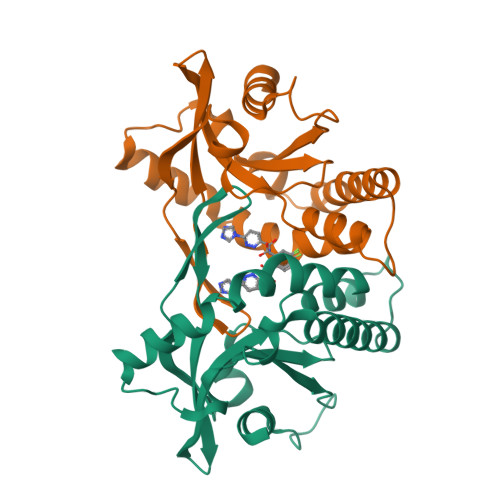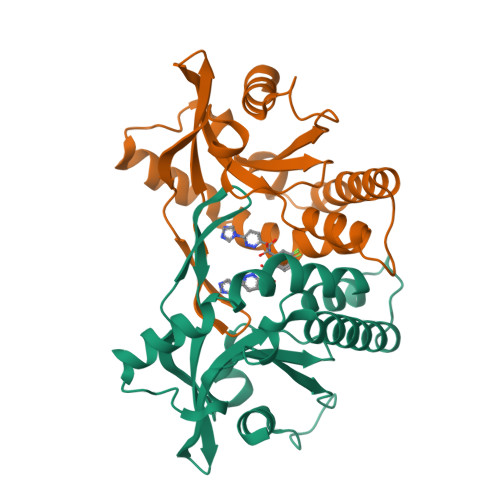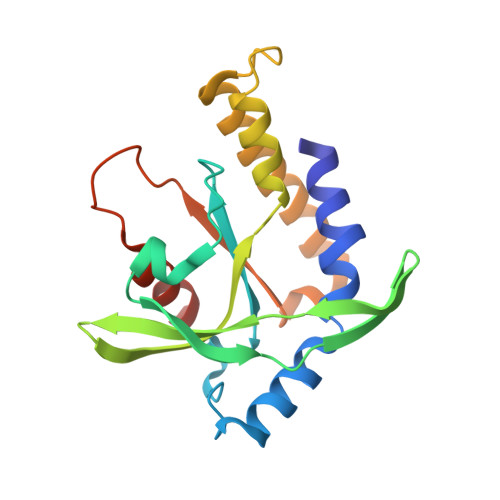Antitumor activity of a systemic STING-activating non-nucleotide cGAMP mimetic.
Chin, E.N., Yu, C., Vartabedian, V.F., Jia, Y., Kumar, M., Gamo, A.M., Vernier, W., Ali, S.H., Kissai, M., Lazar, D.C., Nguyen, N., Pereira, L.E., Benish, B., Woods, A.K., Joseph, S.B., Chu, A., Johnson, K.A., Sander, P.N., Martinez-Pena, F., Hampton, E.N., Young, T.S., Wolan, D.W., Chatterjee, A.K., Schultz, P.G., Petrassi, H.M., Teijaro, J.R., Lairson, L.L.(2020) Science 369: 993-999
- PubMed: 32820126
- DOI: https://doi.org/10.1126/science.abb4255
- Primary Citation of Related Structures:
6XNN, 6XNP - PubMed Abstract:
Stimulator of interferon genes (STING) links innate immunity to biological processes ranging from antitumor immunity to microbiome homeostasis. Mechanistic understanding of the anticancer potential for STING receptor activation is currently limited by metabolic instability of the natural cyclic dinucleotide (CDN) ligands. From a pathway-targeted cell-based screen, we identified a non-nucleotide, small-molecule STING agonist, termed SR-717, that demonstrates broad interspecies and interallelic specificity. A 1.8-angstrom cocrystal structure revealed that SR-717 functions as a direct cyclic guanosine monophosphate-adenosine monophosphate (cGAMP) mimetic that induces the same "closed" conformation of STING. SR-717 displayed antitumor activity; promoted the activation of CD8 + T, natural killer, and dendritic cells in relevant tissues; and facilitated antigen cross-priming. SR-717 also induced the expression of clinically relevant targets, including programmed cell death 1 ligand 1 (PD-L1), in a STING-dependent manner.
Organizational Affiliation:
Department of Chemistry, The Scripps Research Institute, 10550 North Torrey Pines Road, La Jolla, CA 92037, USA.



















